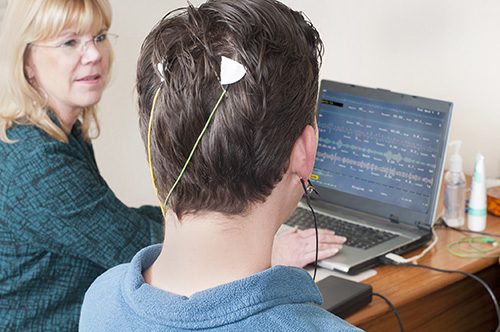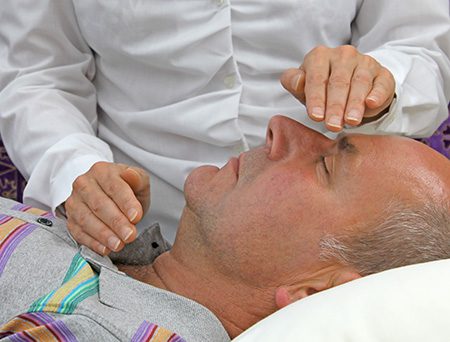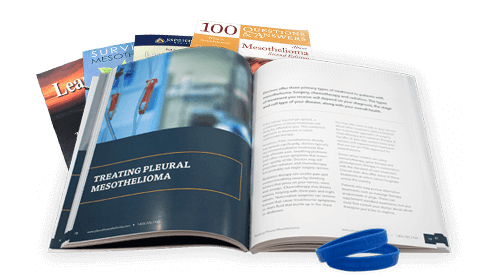Mesothelioma Alternative Treatments
Patients may try complementary treatments for mesothelioma alongside surgery, chemotherapy, immunotherapy and radiation therapy. There is no cure for mesothelioma, however popular complementary and alternative medicine approaches such as acupuncture, meditation and energy therapies can help alleviate pain and side effects.
Types of Alternative Treatments for Mesothelioma
Complementary and alternative medicine (CAM) includes nonconventional approaches to managing mesothelioma and cancer treatment side effects.
CAM treatments may be offered in a medical practice or cancer center, but many are provided in alternative medicine offices or community clinics.
No studies have demonstrated alternative treatments for mesothelioma can treat or cure the disease.
However, these approaches may enhance quality of life, alleviate symptoms and support the health of patients receiving conventional mesothelioma treatments such as chemotherapy, radiation therapy, surgery and immunotherapy.
Popular Complementary and Alternative Mesothelioma Therapies
- Alternative medical systems such as acupuncture, Ayurveda and aromatherapy
- Body work methods such as massage, craniosacral therapy, healing touch and TENS (transcutaneous electrical nerve stimulation)
- Mind-body interventions such as biofeedback, meditation and prayer
- Energy therapies such as Jin Shin Jyutsu and Reiki
- Exercise and movement therapies such as yoga and tai chi
Each patient is unique. No one complementary or alternative treatment or approach will work for every person with mesothelioma.
What Is the Difference Between Alternative and Complementary Therapies?
Alternative mesothelioma treatments are used in place of conventional cancer therapies.
Complementary treatments are received in conjunction with mesothelioma surgery, radiation therapy and chemotherapy. These are also known as integrative treatments or CAM treatments.
What Are the Risks of Alternative Treatments for Mesothelioma?
Alternative cancer therapies can be harmful when they cause patients to delay conventional cancer treatments such as chemotherapy.
A 2018 paper in the Journal of the American Medical Association analyzed National Cancer Database information on the treatment and long-term outcomes of 1.9 million cancer patients.
Patients who received alternative medicine were more likely to refuse conventional cancer treatment and had a higher risk of death compared with patients who did not use alternative medicine.
However, these differences disappeared as long as patients also utilized conventional cancer therapies. If patients received recommended treatments such as chemotherapy and surgery, CAM treatments were not associated with worse outcomes.

Alternative Medical Systems
Some of the most popular alternative medical systems include acupuncture, Ayurveda and aromatherapy.
Acupuncture
The World Health Organization evaluated clinical trials on acupuncture and concluded it may be effective for managing some adverse chemotherapy and radiation therapy reactions such as nausea, vomiting, pain and insomnia.
A 2019 National Cancer Institute summary indicates acupuncture has been practiced in the U.S. for about 200 years, and cancer patients use it to manage nausea and vomiting, fatigue, hot flashes, dry mouth, nerve damage, anxiety, depression and sleep disturbances.
Ayurveda
Ayurveda is a system of medical practice based on balancing the spirit and body systems. This is achieved through tailored herbal treatments and dietary prescriptions, plus regularly engaging in yoga or breathing exercises.
Moringa tree and turmeric — popular anti-cancer plants — come from the Ayurvedic medical tradition.
Aromatherapy
The goal of cancer aromatherapy is to improve physical, emotional and spiritual well-being with fragrant essential oils. These oils are derived from plants such as lavender, peppermint, chamomile, frankincense and rose.
The fragrances are inhaled or applied to skin or bathwater. Aromatherapy is not proven to treat or cure cancer, but it may improve quality of life and lessen symptoms.
A 2019 Complementary Therapies in Clinical Practice study found the essential oil of Rosa damascena improved sleep quality in cancer patients.
Body Work Methods
These approaches involve manipulating the body with touch or direct energy stimulation.
Massage
There are many types of massage including deep tissue, Bowenwork, Swedish, hot stone, trigger point and reflexology. Massage won’t treat mesothelioma, but it may lessen pain.
A 2015 Integrative Cancer Therapies meta-analysis of 12 studies on massage and cancer pain found massage therapy significantly reduced cancer pain compared with no massage or conventional care. Reflexology (foot massage) was the most effective for pain relief.
Craniosacral Therapy
Craniosacral therapy is the gentle manipulation of the bones of the skull and the sacrum (lower back). Osteopathic doctors, chiropractors, physical therapists or massage therapists can practice craniosacral approaches.
Currently, there are no controlled studies of craniosacral therapy to treat cancer patients. However, proponents say it can reduce stress and increase relaxation.
Healing Touch
Healing touch and therapeutic touch are provided by nurses with special training. These approaches will not treat or cure mesothelioma, but studies support that nurse-provided healing touch can decrease cancer-related pain.
TENS
Transcutaneous electrical nerve stimulation (TENS) applies low-voltage electrical currents to the body for pain management. Electrodes are attached to the body around the area of pain, and electrical currents stimulate nerves in a way that blocks normal pain signals.
The electrical current also may cause the brain to release endorphins — the body’s natural pain killers. TENS therapy is FDA-approved, and some insurance policies cover the treatment, which can be used at home.

Mind-Body Alternative and Complementary Therapies
Mind-body methods use the power of the mind to help the body heal and lessen symptoms and side effects of cancer treatment.
Biofeedback

Biofeedback technicians attach electrodes to a patient’s skin, and feedback is displayed on a monitor. Patients use relaxation, imagery and other mental techniques to control displayed body reactions such as muscle tension, skin temperature and heart rate.
This training can help patients learn to reduce stress, pain and anxiety.
Pleural mesothelioma survivor J.R. O’Connor used hypnotherapy, self-hypnosis and imagery to reduce overall stress in his life. “Because stress can drive or at least encourage cancer, I take steps to reduce it wherever possible,” O’Connor said.
Meditation, Imagery, and Relaxation Techniques
A 2017 Current Oncology Reports review of relaxation, imagery and meditation found these approaches can lessen nausea, vomiting, pain, fatigue, anxiety and depressive symptoms.
These and other mind-body therapies also may improve quality of life and positively affect biomarkers of immune function and stress.
Prayer
Prayer and other spiritual pursuits can provide comfort and hope to people affected by cancer.
Judy Glezinski, an 18-year pleural mesothelioma survivor, used daily prayer to reduce stress and maintain a peaceful perspective. “I do spend a certain amount of time in prayer, which helps me a lot,” she said.
Energy Therapies
Energy therapy practitioners typically do not touch patients. Instead, they may move their hands around a patient, just above the body, while concentrating on “unblocking” areas of restricted energy.
Jin Shin Jyutsu
Jin Shin Jyutsu is a Japanese energy therapy. It is not proven to treat cancer effectively, but it may help cancer patients and their health care providers.
A small study of nurses trained in Jin Shin Jyutsu found they could use it as a self-help tool to decrease physical and emotional stress and increase caregiving efficacy.
A 2011 Journal of Holistic Nursing study in women with breast cancer suggests this method improved activities of daily living and adaptation — the ability to cope with difficult challenges to health and well-being.
Reiki

Reiki is a popular energy therapy in America. Many practitioners, and even patients themselves, have attended weekend workshops to learn basic Reiki energy-healing techniques.
A 2016 Complementary Therapies in Clinical Practice study of 26 cancer survivors found Reiki therapy with restorative yoga was more effective than restorative yoga alone for achieving deep levels of relaxation.
Exercise and Movement Therapies
Yoga and tai chi are systems of exercise and movement that may improve more than physical health. People who practice these therapies often report improved mental and emotional health, too.
Clinical studies of the effects of yoga on cancer patients find it can improve quality of life during and after radiation therapy. One 2013 Cancer Nursing study on lung cancer patients found tai chi may support the body’s ability to combat tumor formation.
Involve Your Cancer Care Team
Finding the right combination of conventional and supportive therapies to meet your needs can help you live better after a mesothelioma diagnosis. The best way to safely take advantage of all that CAM therapies offer is to involve your mesothelioma doctors.
They can help you make an objective assessment of the pros and cons of any complementary and alternative mesothelioma therapies you are considering.



